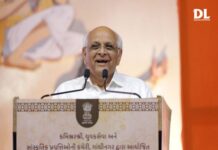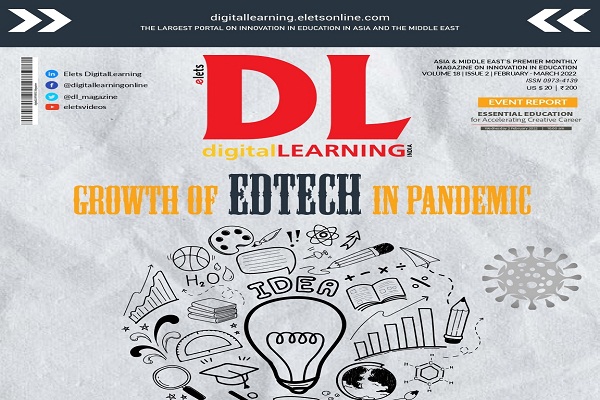Rumi Mallick [RUMI@CSDMS.IN], Centre for Science, Development and Media Studies, India
It is approximately 100 years since John Dewey began arguing for the kind of change that would move schools away from authoritarian classrooms, to environments in which learning is achieved through experimentation, practice and exposure to the real world. Today, technologies are affecting teaching and learning in a big way. Technology in Education or Educational Technology has been defined as the design, application evaluation and development of systems, methods, and materials to improve the process of human learning (Association for Educational Communications and Technology, AECT definition). In very simple terms, educational technology includes ‘all components of the information technology used in the delivery of educational materials.’ Since he last decade, several initiatives (both private and national governments) have experimented with diverse technologies in educacion. While training in and training through computing devices has been the most popular, the outreach of radio and television as education instruction technol1ogies has been truly utstanding especially with respect to remote rural areas. Other educational technologies like alternative (low-cost, low-energy) technologies, wireless and mobile learning platforms are also gaining increasing attention. The use of educational technologies in particular and Information and Communication Technologies (ICTs) in general, has been able to change the instructive ducation process to a participative lifelong learning process, be it the cost heavy computer-enabled learning process or the cost-effective community radio based mass education process.
The changing role of educational technologies in the developing  countries
countries
Most technology integration in schools in developing countries is premised on the realistic perception that technologies are becoming increasingly pervasive in the growing nowledge-based economy and inaction will lead to marginalization of these ountries. With globalisation and the global agenda to develop knowledge societies, the need to constantly upgrade the skills of human resources has ecome crucial. Education and training has become the foundation of globalcompetitiveness with technologyenabled education as the key to human esource development that can meet the challenges of such competition. While developing countries have responded through national education strategies with a focus on integration of technologies mainly ICTs at all levels and for all purposes of education, most technology interventions in the education sector in many developing countries – especially the most poor, have been through small, uncoordinated pilot projects initiated by non-governmental groups while most governments in these countries are struggling to cope with the challenges of infrastructure and implementation and education for all. Recent advances in and applications of technologies, have also demonstrated how increasingly critical private sector involvement and investment is becoming in assuring that the promises of computer and communi-cations capabilities proliferate in the sphere of public education to fulfillment of national education and training missions.
Is it worth investing in technology for education?
While the non-governmental organizations in developing countries have experimented with diverse media and communication technologies with a focus on improving learning outcomes of students, most government responses have been in integrating technology training (mostly computers) in schools. In a drive to ‘prepare for the digital tomorrow’, a number of nationalgovernments are allocating funds to ‘create a digitally literate’ young generation who have the skills to “survive’ and contribute to the digital era. In the past years the ‘online’ (Digital Divide Network, Bytesforall, to name a few) and the ‘offline’ community (the various groups led by the Non- Governmental practitioners) have been debating on several issues of technology especially ICTs in education. Although much literature exists that tell the story of successful ICT in education endeavours, there is lack of adequate research instruments, indicators and even qualitative evaluation methodologies that aresufficiently general and sensitive to capture the impact in a variety of situations. Questions have been raised – “What are the outcomes of ICT in education? What are the lessons we have learnt from good models? Are these models scalable? What does all of these cost? A recent study initiated by infodev (www.infodev.org) on monitoring and evaluation of ICT in educationprojects has raised these similar questions. The study indicates that “relatively little is actually known about the effectiveness of investments in ICTs in education, in promoting educational reform in general, and Education for All(EFA) goals in particular. Despite the billions of dollars of investments in ICTs in education. little hard evidence and consensus exist on the proper, cost-effective utilization of ICTs to meet a wide variety of some of the most pressing educational challenges facing the developing world. To be sure, some good work has been done. These lessons do not seem to be informing policy related to education in a significant way.” Seemingly, there is a glaring gap between ‘what has worked on ground’ and a relevant actionable knowledge base, which can help policy-makers in making more ‘informed’ rather than ‘assumed’ decisions. Such divergent scenarios have often resulted in imprecise policies that have allowed the introduction of computer-aided teaching andlearning in schools without a follow-up with adequate teachers capacity building programmes and change management in the education system The message is clear. National policies on ICT in education is not enough, there needs to be adequate evaluation and monitoring echanism that can assess theICT related investing in progress in the developing countries. This can provide a more credible evidence-based future of ICT in education in development andresult in more comprehensive policies in future.
The scenario in India for ICT and education stems from several initiatives that have created enabling environment at the policy and strategy levels. With the advent of the dedicated educational satellite EDUSAT, the ecosystem is ready to absorb new technologies for achieving the educational goals. We review some key policy and programme interventions at he national level. The Right to Information Act The Government of India on June 15, 2005, passed the much awaited Right to Information (RTI) Act which came into force on October 12, 2005 (120th day of its enactment on June 15, 2005). The Act extends to the whole of India except the State of Jammu and Kashmir. The new law replaces a weaker law enacted by the Lok Sobha (Lower House in Parliament) in 2002. As the globally renowned rights activist Aruna Roy and Magsaysay Award winner points out, “For a country proud of its status as the world’s largest democracy, this is one more step towards making its institutions and authorities accountable and answerable to the people they serve”. In view of making the law truly participatory, progressive and meaningful, the RTI portal (www.righttoinformation.gov.in) of the National Informatics Centre (www.nic.gov.in) was made a central repository of information for citizens to access information through a user-friendly search engine. Citizens can now get more information on the educational pportunities available to them, citizens can now request for information on funds received, budget allocations and funds spend by their local authorities for education and can judge by themselves the educational performance of their district/town/ city. The University Grants Commission (UGC) is responsible for monitoring the workings of institutions of higher education. The UGC has notified all institutions of higher education to disclose various kinds of information (as elaborated in the ‘Returns of Information by Higher Education Institution’, formulated by the UGC). The Right to Education Bill The Right to Education Bill gives effect the Article 21A of the 86th Constitution Amendment Act, affirming that every child between the age of 6 and 14 years has the right to free and compulsory education. This Act entails the state to ensure a school in every child’s neighbourhood conforming to the minimum standards defined in the
Bill. The Bill entails, also free education in all government schools and private schools to provide free education to at least 25% of children from weaker sections. The Bill also makes it mandatory for the state/Union Territories governments to determine every year the requirement of schools, facilities, and their locations; establish additional schools as required; deploy teachers and create facilities for their training. The states are also required to develop a mechanism to monitor enrolment, participation and attainment status of every child, and take corrective steps wherever required. The states also need to make information in this regard available in the public domain, including on an on-line basis. However, although this Bill heralds a positive step toward Universal Primary Education, the Bill has been criticised on several grounds. Not only does it fail to acknowledge factors such as poverty that forces children out of schools, it also does not make any provision for children below 6 years and above 14 years. Anil Sadgopal, a former dean of Delhi University’s Department of Education, notes that this exclusion of some age groups contradicts the United Nations Convention on the Right of the Child, which describes a child as “every human being below 18 years”. “The government of India is a signatory to this convention. By excluding those under six, we are ignoring 170 million children,” he says. Educationalist claims that exclusion of children below 6 year will mainly affect the poorest section of the society. The National Curriculum Framework (NCF) Prepared by the National Council for Educational Research and Training (NCERT), the NCF mphasises the words learning without burden and child-centred education repeatedly. Its array of suggestions, includes cutting down on the number of textbooks, making assessment methods flexible, and promoting more inclusive learning. The pathbreaking suggestions of the new National Curriculum Framework has put the child firmly at the centre of its proposals. The NCF has been “sensitive” to the needs of children and understands that the ultimate goal of education is to “motivate”. The framework also has a section on Teacher Education for Curriculum Renewal, which, recognizes that, “Attempts at curricular reform have not been adequately supported by teacher education” and suggests strategies for organising teacher training programmes. The NCF has devoted a chapter to School and Classroom Environment, mentioning that enough attention has not been paid to the importance to the physical environment for learning and heads of school and block functionaries needs to focus on ensuring that at least minimum infrastructural requirements are met. It also mentions that the ideal number of students in a class should be round 30. The nation waits to witness how NCF recommendations will become a reality in the face of crumbling basic infrastructure and in most cases no infrastructure in schools. The Sarva Shiksha Abhiayan (SSA) Sarva Shikhsha Abhiyan (Education for All), launched in 2001, is a flagship programme of the national overnment. It aims that all children complete 5 years of primary schooling by 2007 and all children complete 8 years of elementary schooling by 2010. The SSA program combines centrally set targets and norms for planning and osting with decentralized management, bottom up planning, community mobilization, and social audits. SSA funds annual work plans submitted by states and districts to meet the targets. SSA provides ample flexibility to design ocally pecific strategies, encouraging partnerships with nongovernmental organizations and requiring community oversight to ensure transparency and sustainability. In 2005, SSA approved the ICT@school initiatives, which involves the introduction of computer education in the primary level in several states. Mission 2007: Every village aknowledge centre.
This national capacity building programme received support of Rs. 100 crores (USD 22.2 million)from the Government of India in its Union Budget 2005-06, hich was presented by the Finance Minister (FM), P Chidambaram. The FM said that the Government shared the goal of Mission 2007, which is to establish village knowledge centres in every Indian village by the 60th anniversary of India’s Independence Day. The Mission also received International recognition at the World Summit on Information Society (WSIS 2005) where the International Telecommunication Union (ITU), an arm of United Nations formally accepted ‘Mission 2007’ as a flagship programme of its ‘Connect the World’ initiative. The UNDP and the Swiss Development gency (SDC) also joined the International support group for the programme along with International Development Research Centre (IDRC), Canadian International Development Agency (CIDA), the United Kingdom’s Department for International Development (DFID), the World Bank, UNESCO, WHO, FAO, GKP, amongst others, promising financial support and help in technology deployment.





















